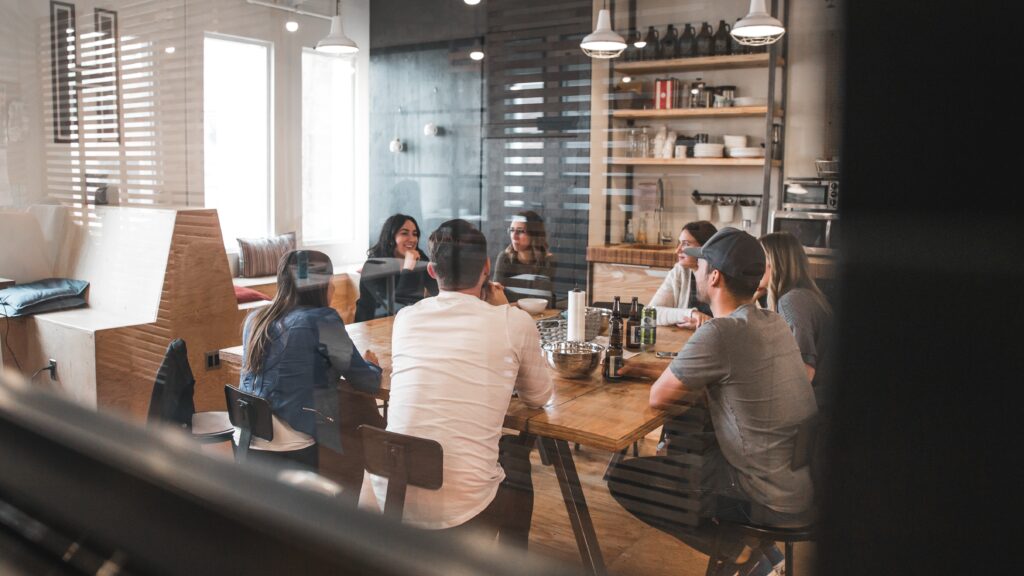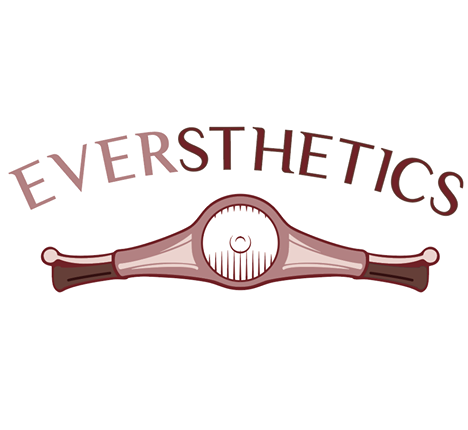In today’s fast-paced work environment, prioritizing well-being is essential for fostering a positive and productive workforce. Additionally, optimizing the physical and mental aspects of our workspace can significantly impact our levels of focus, stress, and engagement. By harnessing the potential of everyday aesthetics, we can create workspaces that not only please the senses, but also promote employee well-being.
In this article, we will explore a range of practical tips and examples to elevate workplace well-being through the power of aesthetics.
Aesthetically Pleasing Workspaces
When designing workspaces, we need to consider using a combination of colors that inspire productivity and calmness. For instance, shades of blue can enhance focus and efficiency, while pops of vibrant colors like yellow or green can stimulate creativity. Additionally, we need to ensure that lighting is sufficient and preferably natural whenever possible, as it can positively impact mood and energy levels; I love natural lighting and looking out the window, it makes me release the stress, don’t you? A good idea is also to integrate artwork or motivational quotes strategically to provide visual inspiration and spark creativity!
For instance, an advertising agency could transform their office by using a blend of vibrant colors, quirky artwork, and abundant natural light; this will lead to an energized and lively atmosphere, stimulating employees’ creativity and boosting their overall well-being!
Ergonomics and Comfort
Prioritize ergonomic design to create a comfortable and supportive work environment. It is a good idea to invest in adjustable chairs and ergonomic accessories to encourage proper posture and reduce the risk of musculoskeletal issues. Consider providing standing desks or adjustable workstations to promote movement throughout the day. Additionally, offer comfortable breakout spaces for employees to relax and recharge during breaks.
For instance, a tech company could introduce standing desks and ergonomic chairs throughout their office, along with designated relaxation areas, featuring cozy seating and calming natural elements. This not only could improve employees’ physical well-being, but also enhance their mental clarity and focus.
Personalization and Ownership
What about empowering employees to personalize their workspaces and allowing them to express their individuality and create a sense of ownership? You could encourage the display of personal items such as family photos, favorite mementos, or inspiring quotes; this personal touch fosters a connection between individuals and their work environment, enhancing job satisfaction and overall well-being.
For example, a marketing agency could provide employees with the freedom to decorate their cubicles with personal items, resulting in a vibrant, diverse, and visually stimulating office. This inclusive approach could boost employee morale and create a strong sense of belonging.
Nature and Biophilic Design
Integrate elements of nature into the workspace to promote well-being and connection with the natural world. Incorporate indoor plants, natural materials, and large windows with scenic views. Consider installing living walls or dedicated green spaces within the office. These biophilic design elements have been proven to reduce stress, increase productivity, and improve air quality.
For instance, an architectural firm could incorporate living walls adorned with lush greenery in their office. The presence of nature could have a calming effect, creating a serene and refreshing ambiance that inspired creativity and improve employee well-being.
Collaborative and Communal Spaces
Designate areas that foster collaboration, interaction, and social connections among employees. Create open workspaces, breakout areas, or shared lounges equipped with comfortable seating, writable surfaces, and inspiring artwork; these spaces encourage idea exchange, team bonding, and moments of relaxation, ultimately boosting well-being and camaraderie within the organization.
For example, a software development company could implement a communal area with cozy seating, whiteboards, and interactive displays; this space could become a hub for spontaneous brainstorming sessions, informal meetings, and team-building activities, resulting in increased collaboration and employee satisfaction.

Work-life balance and boundaries
Achieving a healthy work-life balance is crucial for maintaining well-being and preventing burnout. It’s nice to set clear boundaries if possible, by establishing designated work hours and personal time. Avoid checking work emails or engaging in work-related tasks during personal hours. Or create a physical separation between work and leisure areas, even within your home office. Also dedicate a specific workspace to enhance focus and productivity during work hours, and make sure to disconnect and enjoy personal time when you’re off the clock.
Practical tip: Utilize productivity tools, such as time management apps, task organizers, and calendar reminders to help you prioritize and allocate time effectively, ensuring a healthy balance between work and personal life. Good luck!
Soundscapes and acoustics
The influence of sound on our well-being cannot be underestimated. Managing noise levels in the workplace is crucial for reducing stress and improving focus. Consider using sound-absorbing materials, such as carpets, curtains, or acoustic panels, to minimize distractions and create a more peaceful environment. Provide designated quiet spaces where employees can retreat for concentrated work or relaxation. Alternatively, implement white noise machines or soft background music to mask disruptive sounds and enhance productivity. My office is in a suburban area, so birds and natural sounds play the role of soft background music, and we are all grateful for that.
Practical tip: Encourage the use of noise-canceling headphones for employees who require a quiet work environment or for focused tasks requiring deep concentration.
Mindfulness and stress reduction
Integrating mindfulness practices into the workday can enhance focus, reduce stress, and improve overall well-being. Encourage employees to take short mindfulness breaks throughout the day, engaging in activities such as deep breathing exercises, meditation, or guided visualization. Provide quiet spaces or designated meditation rooms where individuals can retreat to recharge their energy and find a moment of tranquility amidst their busy schedules.
Practical tip: Share resources and recommend mindfulness apps to assist employees in incorporating mindfulness into their daily routines.
Sustainable and eco-friendly workplaces
Promoting sustainability and eco-friendly practices in the workplace not only benefits the environment, but also enhances employee well-being and fosters a sense of corporate social responsibility. Implement recycling programs, reduce paper waste by embracing digital solutions, and encourage the use of reusable products such as water bottles and coffee mugs. Integrate plants and natural elements into the workspace to improve air quality and create a connection with nature.
Practical tip: Organize sustainability challenges or initiatives that encourage employees to participate in eco-friendly practices, such as carpooling, energy-saving measures, or volunteering for environmental causes.
Conclusion:
From aesthetically pleasing workspaces and ergonomic design to personalization, biophilic elements, and collaborative spaces, each aspect contributes to an enhanced employee experience. By prioritizing work-life balance, optimizing soundscapes, embracing mindfulness practices, and promoting sustainability, we can create aesthetically supportive workspaces that enhance well-being and productivity.
Remember, it’s the small changes and consistent efforts that make a significant impact on employee satisfaction, engagement, and overall happiness. Let us strive to create work environments that harmonize work and well-being, ensuring that both individuals and organizations thrive in an aesthetically pleasing and supportive setting. Let’s recognize the power of aesthetics in promoting well-being and strive to create workplaces that inspire, support, and uplift individuals, leading to a happier, healthier, and more productive workforce!








Leave a Reply